The world is filled with visual data, security cameras monitoring our streets to robots inspecting factory floors and autonomous vehicles navigating our roads, the sheer volume of images and videos being generated is staggering. But raw data, no matter how abundant, is only valuable when it’s understood. This is where annotation comes in the crucial process of adding context and meaning to visual information.Traditionally, annotation has been a centralised process. Data is collected at the edge, transmitted to a central server or cloud platform, and then processed and annotated, often by human annotators. While this approach has served its purpose, it faces significant limitations in today’s real time, data intensive landscape. Latency, bandwidth constraints, privacy concerns, and the sheer scale of data are pushing the boundaries of centralised annotation.
Enter Annotation at the Edge
This emerging paradigm shifts the annotation process closer to the data source, embedding intelligence directly within edge devices or local networks. Instead of sending massive streams of raw visual data to the cloud, the edge itself performs initial analysis and annotation, extracting meaningful insights in real time.
Why the Shift to Edge Annotation ?
The move towards edge annotation is driven by a confluence of compelling advantages:
Reduced Latency: For applications like autonomous driving, industrial automation, and real-time surveillance, even slight delays in data processing and decision-making can have critical consequences. Edge annotation drastically reduces latency by processing data locally, enabling immediate responses and actions.
Bandwidth Efficiency: Transmitting vast amounts of unannotated visual data consumes significant bandwidth. By performing initial analysis and annotation at the edge, only relevant metadata or highly compressed information needs to be transmitted, leading to substantial cost savings and improved network efficiency.
Enhanced Privacy and Security: In many scenarios, visual data can contain sensitive information. Processing and annotating data locally minimizes the need to transmit raw data over networks, enhancing privacy and reducing the risk of data breaches.
Improved Scalability: As the number of edge devices and the volume of visual data continue to grow exponentially, centralized annotation systems can become bottlenecks. Distributing the annotation workload across edge devices offers a more scalable and sustainable solution.
Real-Time Insights and Decision Making: Edge annotation enables immediate extraction of valuable insights from visual data, empowering real-time decision making and triggering immediate actions based on local context. For example, a smart camera in a retail store can instantly detect shoplifting or monitor shelf occupancy without relying on cloud processing.
Offline Operation: Edge devices can continue to operate and perform annotation even in the absence of a reliable network connection, which is crucial for applications in remote or challenging environments.

How Does Edge Annotation Work?
Annotation at the edge relies on a combination of advancements in:
Edge Computing Hardware: Powerful yet energy efficient processors, GPUs, and specialized AI accelerators are becoming increasingly available for edge devices, enabling them to handle complex computational tasks.
Embedded AI and Machine Learning Models: Lightweight and optimised AI models, specifically trained for edge deployment, can perform tasks like object detection, image classification, semantic segmentation, and even basic tracking directly on the device.
Efficient Annotation Techniques: Techniques like active learning, where the edge device identifies the most informative data points for annotation, and federated learning, where models are trained collaboratively across multiple edge devices without sharing raw data, are crucial for efficient edge annotation.
Smart Sensor Fusion: Combining data from multiple sensors (ex – cameras, lidar, radar) at the edge can provide richer contextual information and improve the accuracy and reliability of annotations.
Applications of Annotation at the Edge:
The potential applications of edge annotation are vast and span numerous industries:
Autonomous Vehicles: Real-time object detection, lane keeping, and traffic sign recognition are critical for autonomous driving, requiring low-latency edge processing and annotation.
Industrial Automation: Quality control, defect detection, and robotic guidance in manufacturing environments benefit significantly from real-time visual analysis and annotation at the edge.
Smart Cities: Monitoring traffic flow, pedestrian safety, and infrastructure health can be enhanced through edge processed video analytics and annotation from smart cameras and sensors.
Healthcare: Real-time analysis of medical images and videos at the point of care can aid in faster diagnosis and treatment.
Retail: Customer behavior analysis, inventory management, and security surveillance can be improved with edge-based visual intelligence.
Agriculture: Monitoring crop health, detecting pests and diseases, and optimizing irrigation can be achieved through edge-processed imagery from drones and sensors.
Challenges and Future Directions:
While promising, annotation at the edge also presents certain challenges:
Resource Constraints: Edge devices typically have limited computational power, memory, and battery life compared to cloud servers. Developing efficient AI models and annotation techniques that can operate within these constraints is crucial.
Model Deployment and Management: Deploying, updating, and managing AI models across a large fleet of diverse edge devices can be complex.
Data Security and Privacy: While edge processing enhances privacy, ensuring the security of data and models on individual edge devices remains a concern.
Standardization and Interoperability: Establishing standards for edge annotation formats and protocols is important for seamless integration and data exchange. Final note The future of annotation is definitely at the edge. As edge computing capabilities continue to advance and AI models become more efficient, we can expect to see widespread adoption of edge annotation across various industries. This shift will unlock the true potential of real time visual data, enabling faster, smarter and more secure decision making at the source. By bringing intelligence closer to the data, we are paving the way for a more perceptive and responsive world. Qualitas Global’s annotation services, designed to enhance your data quality and machine learning models. Our expert team meticulously annotates your datasets, ensuring accuracy and consistency that drive superior results.
